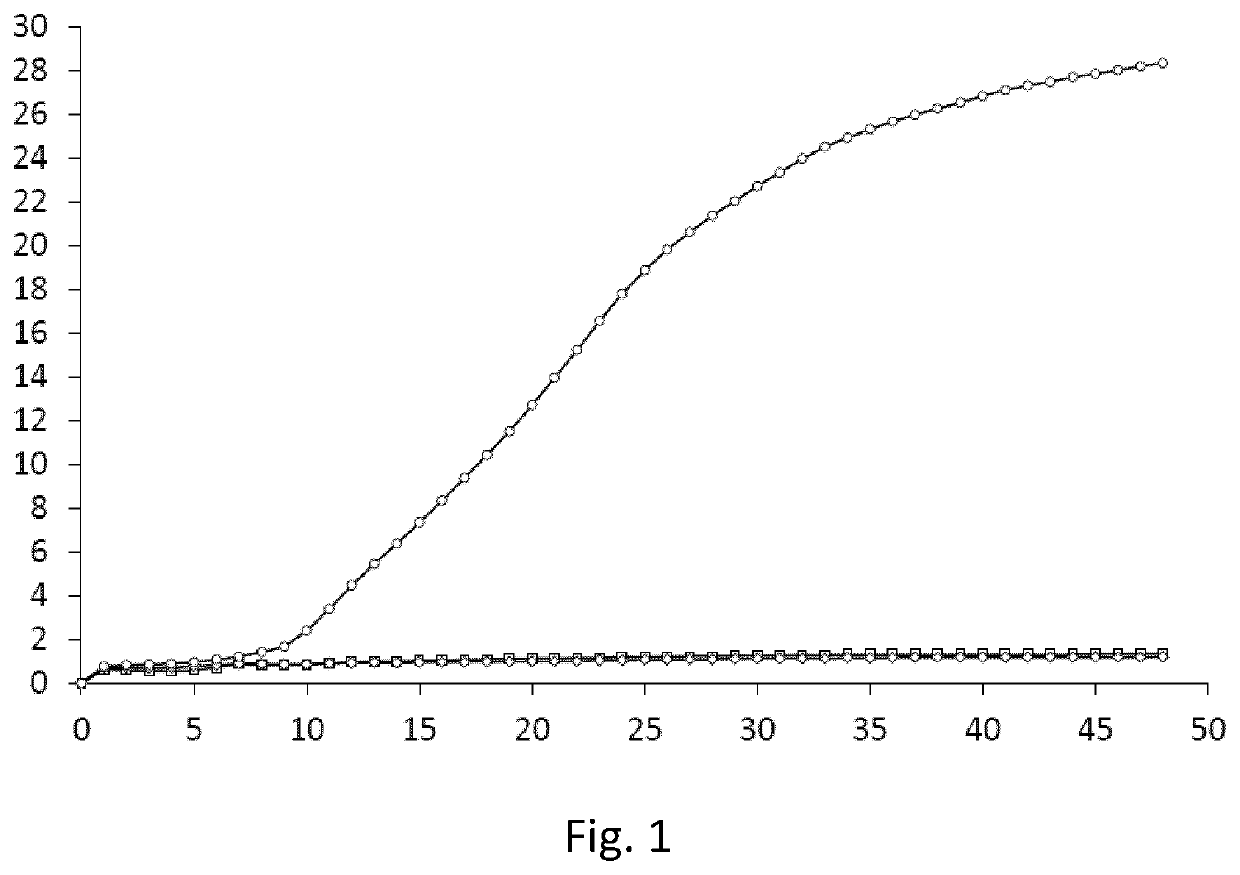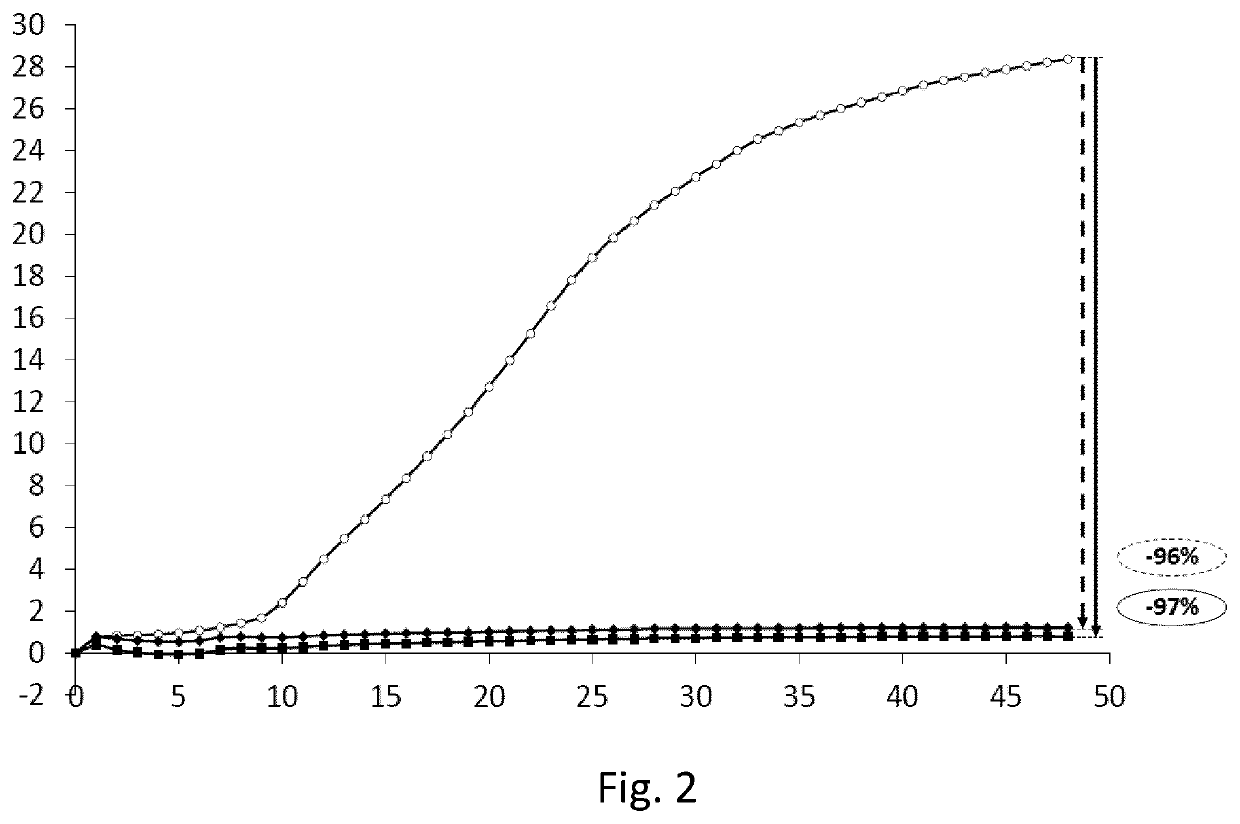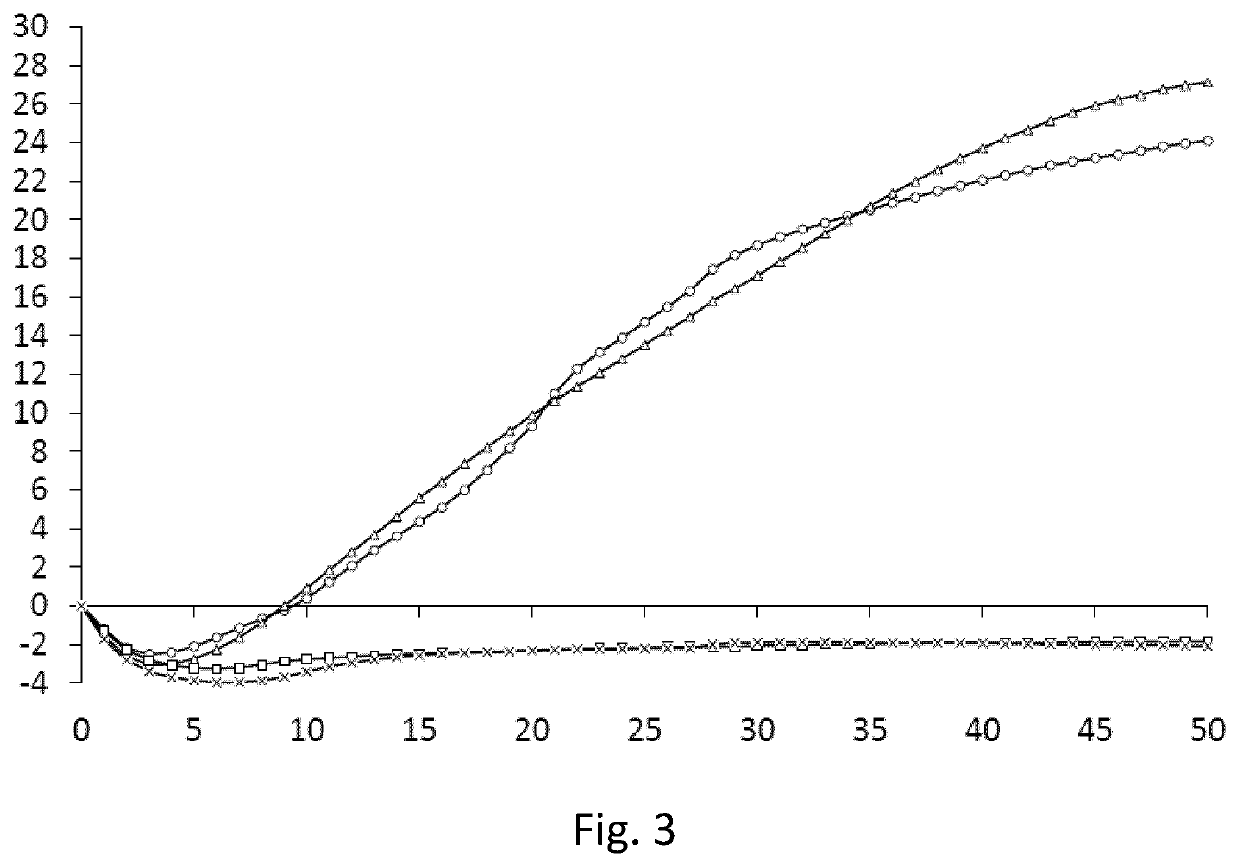Detection of the inhibition capacity of a first microbial strain on the gas production of a second gas producing microbial strain
a technology of microbial strain and gas production, which is applied in the direction of microbiological testing/measurement, biochemistry apparatus and processes, etc., can solve the problems of low sensitivity of methods, undesirable microbial strains, and large number of gas producing microbial strains
- Summary
- Abstract
- Description
- Claims
- Application Information
AI Technical Summary
Benefits of technology
Problems solved by technology
Method used
Image
Examples
example 1
[0188]
StrainBacillus subtilisDSM32324Bacillus subtilisDSM32325Clostridium septicumDSM7534
[0189]The Bacillus subtilis strains deposited as DSM32324 and DSM32325 did not produce gas (or very little) during 48 h incubation as single strains (FIG. 1).
[0190]The total gas production of Clostridium septicum deposited as DSM7534 when cultivated as single strain is also shown in FIG. 1.
[0191]The Bacillus subtilis strain deposited as DSM32324 reduced the gas production from Clostridium septicum deposited as DSM7534 by 97% compared to when the Clostridium septicum strain was cultivated as single strain (FIG. 2).
[0192]The Bacillus subtilis strain deposited as DSM32325 reduced the gas production from Clostridium septicum deposited as DSM7534 by 96% compared to when the Clostridium septicum strain was cultivated as single strain (FIG. 2).
example 2
[0193]
StrainBacillus subtilisDSM32324Bacillus licheniformisDSM17236Clostridium septicumDSM7534Clostridium septicumStrain D
[0194]The Bacillus subtilis strain deposited as DSM32324 and the Bacillus licheniformis strain deposited as DSM17236 did not produce gas (or very little) during 48 h incubation as single strains (FIG. 3).
[0195]Two different Clostridium septicum strains have been tested and the results in FIG. 3 indicate that the total gas produced during the incubation is strain specific.
[0196]The Bacillus subtilis strain deposited as DSM32324 inhibited both tested Clostridium septicum strains completely (FIG. 4).
[0197]The results provided in FIG. 4 indicate that the Bacillus licheniformis strain deposited as DSM17236 to a large extent inhibited both tested Clostridium septicum strains in that it provided some reduction (68%) of Clostridium septicum Strain D (FIG. 4) and a higher reduction (76%) of Clostridium septicum deposited as DSM7534.
example 3
[0198]
StrainLactobacillus animalisPTA-6750Bacillus subtilisStrain ABacillus subtilisDSM32324Clostridium perfringens type ADSM756
[0199]FIG. 5 shows that the Lactobacillus animalis strain deposited as PTA-6750, the Bacillus subtilis strain A and the Bacillus subtilis strain deposited as DSM32324 did not produce gas during incubation. The total gas production of Clostridium perfringens type A deposited as DSM756 is also shown in FIG. 5.
[0200]The results in FIG. 6 indicate that Bacillus subtilis strain deposited as DSM32324 inhibited at least partially (23%) Clostridium perfringens type A deposited as DSM756. Bacillus subtilis strain A resulted in some reduction of the gas production of Clostridium perfringens type A deposited as DSM756 but to a lower extent (6%). Lactobacillus animalis deposited as PTA-6750 resulted in 36% reduction of total gas production after incubation with Clostridium perfringens type A deposited as DSM756.
PUM
| Property | Measurement | Unit |
|---|---|---|
| time | aaaaa | aaaaa |
| time | aaaaa | aaaaa |
| time | aaaaa | aaaaa |
Abstract
Description
Claims
Application Information
 Login to View More
Login to View More - R&D
- Intellectual Property
- Life Sciences
- Materials
- Tech Scout
- Unparalleled Data Quality
- Higher Quality Content
- 60% Fewer Hallucinations
Browse by: Latest US Patents, China's latest patents, Technical Efficacy Thesaurus, Application Domain, Technology Topic, Popular Technical Reports.
© 2025 PatSnap. All rights reserved.Legal|Privacy policy|Modern Slavery Act Transparency Statement|Sitemap|About US| Contact US: help@patsnap.com



